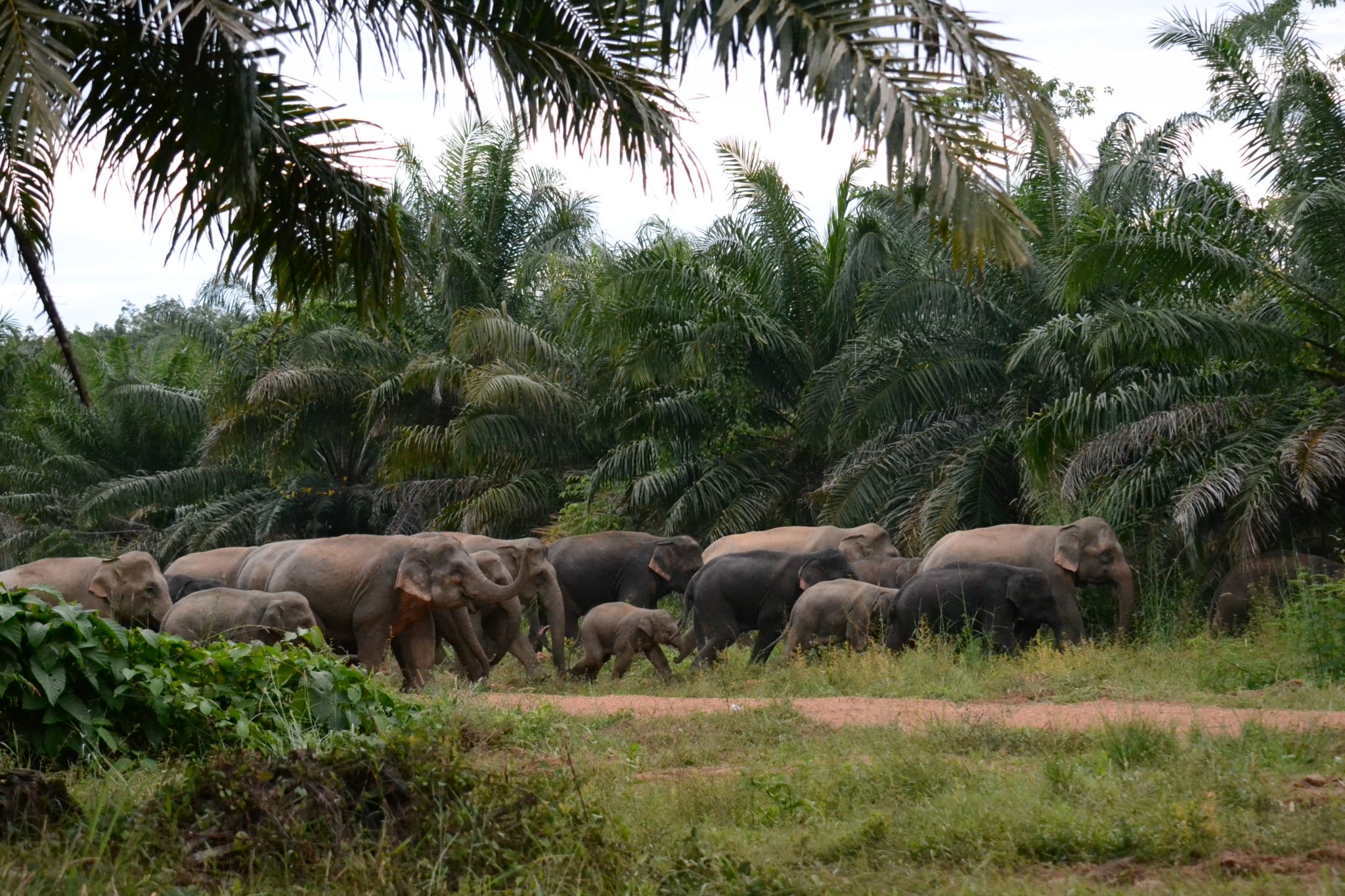The team in Thailand has been busy over the last two months – especially while director and founder of Bring the Elephant Home (BTEH) Antoinette van de Water has been in country! With the start of data collection for a subset of five BTEH rented lemongrass plots and ten community-owned pineapple plots on the horizon, equipment and methodology trialing has begun. Data collection via camera trapping is set to begin in mid-May to record baseline elephant behavior in control and experimental plots for the HECTAARE project and for Brooke Friswold’s PhD research with King Mongkut’s University of Technology Thonburi (KMUTT) in partnership with BTEH and HECTAARE.
Written by Brooke Friswold
The first camera trap was placed behind BTEH project manager David Owen’s house who lives on the border of the national park and the agricultural area of the village. David regularly sees elephants leave the national park at night and walk through a pathway behind their house to enter the agricultural fields. The arrow in orange in the image to the left indicates the path where the elephants are often seen leaving the national park to enter the agricultural areas. The arrow in blue indicates the placement of the camera trap. The plots in front of the arrows are experimental plots growing chili, mulberry, and other aromatic crops that may be less palatable to elephants as part of David Owen’s MSc research project.


On the first night of camera trialing we placed the camera trap (Bushnell L20 Low Glow Trail Cameras) as a means to trial the camera trap for various evaluations with the intention of leaving it there long term once data collection starts. To test how sensitive the camera traps were, metered transect tape was laid up to 100 feet from the camera with the intention of generating movement at ten foot intervals to see what triggered the camera. We also wanted to test the camera’s range of view and how well it performed in the dark. The camera was placed in a protective steel box to keep it safe from weathering and human tampering and fastened it to a tree with cables. In the future after collecting more camera trap footage and trials, we will continue to adjust height (likely between 1.5m to 3m for camera trapping elephants), angle, settings etc..


The camera traps and transect tape were erected around dusk and the group was going to head back to David’s house (which can be seen close by in the distance) for dinner and return to the tree to start trialing the camera traps once dark. Before leaving it was briefly discussed if the camera trap should be turned on but decided against it as it would still be typically too early for the elephants to come out (they like to come out well after 10pm). David also mentioned that they hadn’t seen the elephants in quite some time.

Following sunset, the group finished dinner and were about to head to the camera trap when we heard an elephant bellowing loudly from the edge of the national park just near the camera trap. The elephants in this area have been known to let out a loud roar or shriek before exiting the national park. The head of a juvenile bull is soon seen sticking out from the foliage of the national park edge and emerging along the pathway right in front of our camera trap! We all watch excitedly as the elephant walks and expresses a variety of behaviors directly in front of the camera trap. A nearby pineapple farmer begins throwing firecrackers at the elephant, a common tactic used by local farmers and park rangers to scare the elephants back into the national park.
When elephants emerge from the national park the surrounding farming areas erupt into firecrackers, shouts, spotlights, and rangers zooming around on motorcycles – making it feel slightly like a war zone at times with the remnants of the firecrackers seen the next day. The planting of alternative crops that are less palatable to elephants, such as BTEH’s Tom Yum project; has the potential to reduce the stress that is evident in both human and elephant entities during these nightly confrontations. It is one of the multiple tactics that BTEH is utilizing in this area to attempt to increase human elephant coexistence.

Using our spotlight and voices we attempt to encourage the elephant to return to the forest, however he ignores all deterrents and heads further from the forest in a hurried and frantic manner. As the excitement settles down it dawns on us…the camera trap was not on. Had it been on we would have captured behavioral data within a half hour of putting up our camera trap!
Our first attempt at trialing camera traps came with a valuable lesson learned: always turn the camera trap on. Always.
‹ Back to previous page